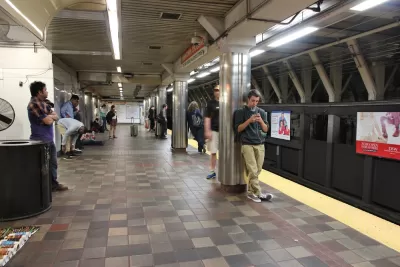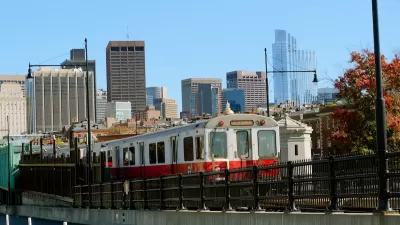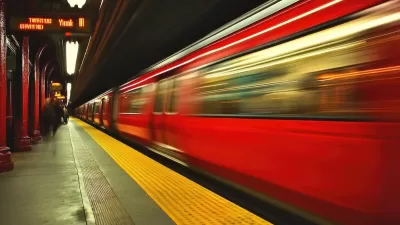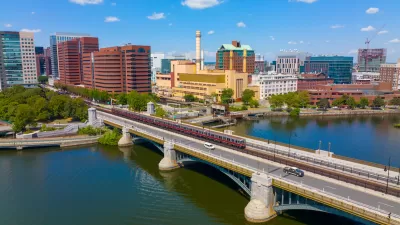A Twitter account is broadcasting its findings about the mood of transit riders in Boston, in real time.

Yesterday, I spent a total of about 20 minutes (unofficial tally) waiting on the Metro 201 bus in Los Angeles waiting to turn left at unprotected left turns while cars clogged intersections and cut in front of the bus in the line to turn.
I did another quick, unofficial tally, and estimated that I had spent 10,000 hours on buses waiting to turn left—10,000 hours of deliberate practice being Malcolm Gladwell's theoretical threshold for world-class skill (a theory that has since been debunked).
Needless to say, I wasn't in a good mood.
This morning I felt a little better, knowing that someone out there understands the pain (and joy, of course) of transit users.
"A new Twitter account called @MBTA_Mood, which has no affiliation with the MBTA, has been analyzing the overall mentality of some MBTA riders based solely on their tweets, and then regurgitating the information back to the general public on social media," reports Steve Annear.
So, for example, yesterday at 9 am, about the same time I would eventually be waiting for the 201 to turn left at 6th and Vermont in Los Angeles from a duration of time easily longer than five minutes, the account tweeted: "There was a fall in rider mood over the past hour. Analyzed 68 tweets, with 52.41% feeling Sadness. #MBTA #MBTAMOOD."
The creator of the Twitter account wishes to stay anonymous, but the tool used to generate the mood analytics is not: the IBM Watson Tone Analyzer, "which uses linguistic analysis to detect emotion in text and 'predict whether they are happy, sad, confident, and more,' according to IBM’s website."
FULL STORY: This Twitter account tells you the general mood of MBTA riders by the hour

Study: Maui’s Plan to Convert Vacation Rentals to Long-Term Housing Could Cause Nearly $1 Billion Economic Loss
The plan would reduce visitor accommodation by 25,% resulting in 1,900 jobs lost.

North Texas Transit Leaders Tout Benefits of TOD for Growing Region
At a summit focused on transit-oriented development, policymakers discussed how North Texas’ expanded light rail system can serve as a tool for economic growth.

Using Old Oil and Gas Wells for Green Energy Storage
Penn State researchers have found that repurposing abandoned oil and gas wells for geothermal-assisted compressed-air energy storage can boost efficiency, reduce environmental risks, and support clean energy and job transitions.

From Blight to Benefit: Early Results From California’s Equitable Cleanup Program
The Equitable Community Revitalization Grant (ECRG) program is reshaping brownfield redevelopment by prioritizing projects in low-income and environmental justice communities, emphasizing equity, transparency, and community benefits.

Planting Relief: Tackling Las Vegas Heat One Tree at a Time
Nevada Plants, a Las Vegas-based nonprofit, is combating the city’s extreme urban heat by giving away trees to residents in underserved neighborhoods, promoting shade, sustainability, and community health.

How Madison’s Tree Planting Efforts Are Growing a Healthier Community
Madison’s annual tree planting initiative is enhancing environmental resilience, public health, and community livability by adding 1,400 carefully selected trees citywide, with strong community and institutional support for urban forestry.
Urban Design for Planners 1: Software Tools
This six-course series explores essential urban design concepts using open source software and equips planners with the tools they need to participate fully in the urban design process.
Planning for Universal Design
Learn the tools for implementing Universal Design in planning regulations.
Ascent Environmental
Borough of Carlisle
Institute for Housing and Urban Development Studies (IHS)
City of Grandview
Harvard GSD Executive Education
Toledo-Lucas County Plan Commissions
Salt Lake City
NYU Wagner Graduate School of Public Service





























